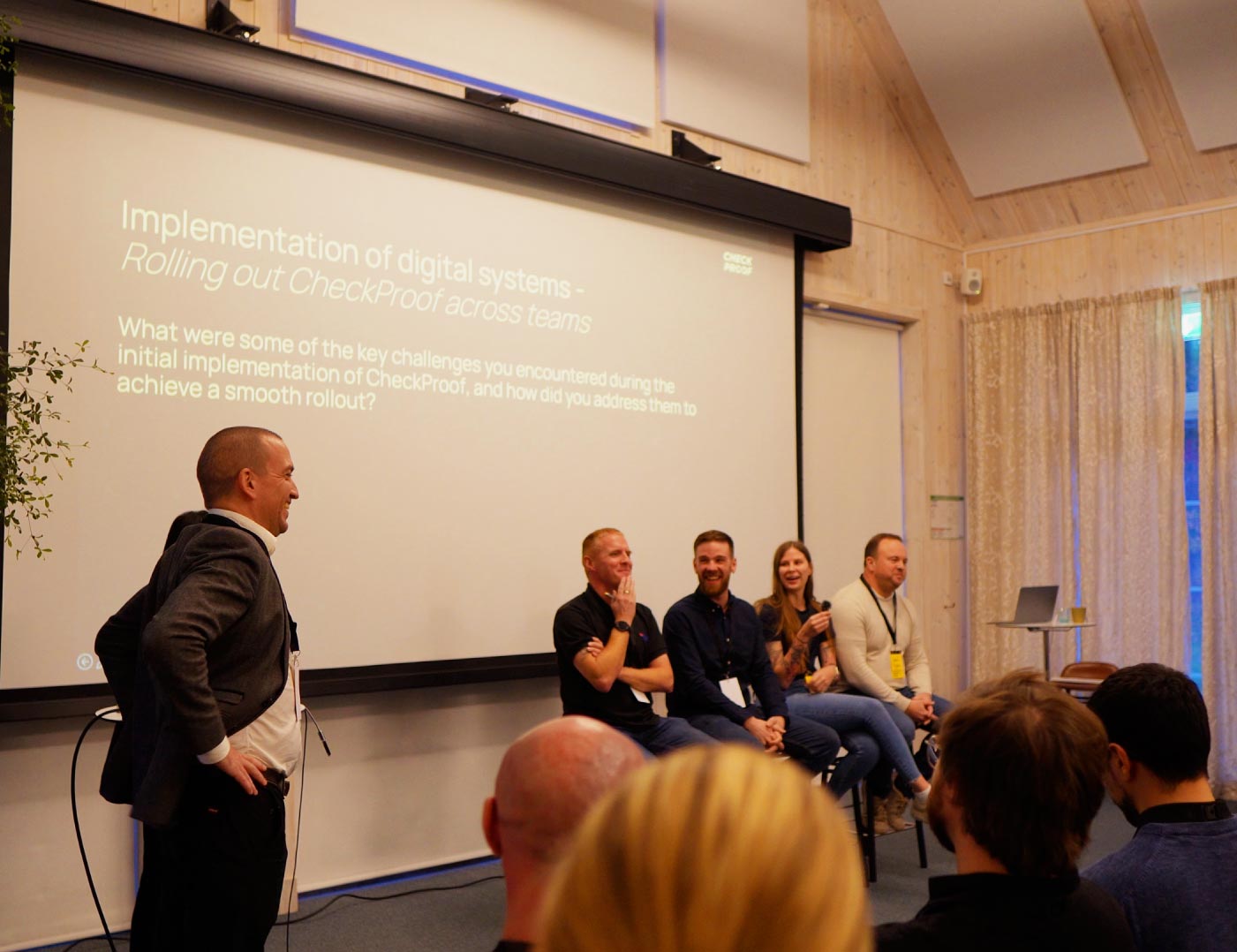Introducing “yet another system” is rarely popular. But CheckProof’s app was welcomed with open arms by staff who had grown tired of spending more time in their previous inspection tool than examining the actual site that was to be checked. After a quick and smooth implementation, employees at Preem’s depots and refineries can now find inspection routines directly on their smartphones. At Preem, they’ve already identified additional uses for the tool.
With two refineries in Gothenburg and Lysekil respectively, and six depots throughout Sweden and one in Norway, Preem is Sweden’s largest fuel company. The business operations include areas classified as explosive atmospheres and are protected on the basis of having a vital societal function. Security is the highest priority in all situations, with documented routines being a legal requirement.
– In-plant inspections have been around since ancient times. The ways of working become more and more digital with each passing year, even though progress hasn’t been as rapid as one would wish, says Rickard Skåås, business analyst and team leader at Preem’s refinery in Lysekil.
His colleague Martin Tobiasson, operator within special fuels, adds:
– In around 2014, we went from using a physical routine calendar to a system that, although digital, was difficult to use. It also required us to bring a portable but very heavy device to each inspection round.
A new feature became the final piece of the puzzle
Dissatisfaction with the unwieldy system grew internally. After a few years, Preem began to evaluate alternative solutions.
– We did extensive work creating lists of must-haves and nice-to-haves, both in terms of functionality and information security. After conducting an external analysis we were left with five different system suppliers that we rated based on how well they matched our requirements, says Rickard.
One supplier stood out from the rest; a startup company based in Täby near Stockholm that had previously caught his attention at a Gothenburg maintenance fair in 2016:
– I saw the words ‘checklists and inspections in the corner of my eye and made a u-turn towards their island booth. I liked what I saw but a couple of important puzzle pieces were missing, making their solution unviable for us at the time.
One of the must-haves on Preem’s list was the ability to scan checkpoints at their facilities. This is done to ensure that each routine is really conducted on-site. When CheckProof eventually complemented its solution with an RFID-function – and was able to prove that they met Preem’s strict IT security requirements – the time was ripe to initiate a partnership.
– You could say that we simply waited for CheckProof to catch up, both in terms of RFID and the hiring of internal expertise within IT security. This allowed us to sign a contract and feel completely confident that all our requirements were being met, Rickard explains.

“The simplest implementation I’ve ever seen”
Once all agreements were in place, the implementation itself was done quickly. In the spring of 2022, only a few months after signing the deal, around 100 users are autonomously working the system. Rickard Skåås was surprised by both how quick the process has been and by the high engagement levels from his coworkers:
– The usual reaction tends to be ‘oh no, another system again?’ but, with CheckProof, our staff have instead been impatient to get started. This is, without a doubt, the simplest implementation I’ve ever seen since I started working with IT at Preemraff in 2010.
The opinion as a whole is confirmed by operator Martin Tobiasson:
– When I was out visiting our depots to introduce the app, almost everybody raised their hand and wanted to start using it right away.
A well thought out training process contributed to Preem’s quick adoption of the system:
– Our contact at CheckProof came to Gothenburg in person and conducted training on the spot for all super users, which are those authorised to create routines in the system. He also scheduled one-on-one follow-ups with everyone. Training is ‘fresh produce’, and the follow-ups meant we didn’t lose momentum, Rickard explains.
Intuitive and user-friendly
One coworker was so eager to get started that he began creating routines in the CheckProof app even before receiving training, Rickard recalls:
– Because the app is so user-friendly, he understood how to do it anyway. Once he had been through training, it mainly confirmed that he’d been doing things correctly.
Reactions from coworkers at refineries and depots have all been positive, according to both Martin and Rickard.
– It’s incredibly easy to use, even for someone who’s just started working. Everything is available on your mobile phone. Before, people had to put more energy into navigating the system than looking at what actually needed to be checked. You can also share a round and hand it over to someone else if you don’t have time to finish it. And if you find something to report, it’s easy to create a notification for the right person, Martin tells us.
A new, validated inspection round within hours instead of days
As an administrator in the CheckProof app, Martin appreciates the fact that creating new rounds and routines, or making changes to existing ones, can be done quickly:
– It could take several days to build a new round in our old system. And to validate the round, we needed help from an expert from the supplier itself. With CheckProof, I can create and validate a new round myself in about two hours. Making changes only takes a few minutes.
Martin is now continuously creating tailor-made rounds in the app. He constantly has new ideas for new processes, with the goal of making the job easier for their depot staff.
– So far, we have 124 active rounds, each containing a list of between 5-20 checks. The checks range from what to look at during the daily inspection to things that need to be gone through during the mandatory safety interviews with external entrepreneurs who visit the depots to do various jobs, he explains.
Preem’s journey towards digitisation continues
Preem is looking forward to continuing their journey towards digitisation together with CheckProof, and eventually phase out more of their existing systems to further streamline their processes. Rickard also expresses that effective digital tools are key to being an attractive employer to younger generations:
– People born in the 2000s are so-called ‘digital natives’ that are not always willing to print papers or manually enter digits into a system. It takes way too much time in relation to the value it creates.
Want to know what CheckProof can do for you?
CheckProof's easy-to-use app makes it easier to do the right thing at the right time. Discover how you can run world-class maintenance that is both cost-effective and sustainable.

Revolutionizing Compliance: Banner Contracts on managing ISO audits with CheckProof

Implementation of Digital Systems: Rolling Out CheckProof Across Teams

From Fuel Savings to Production Gains: Cemex Germany’s Wins with CheckProof

A Recap of the CheckProof Industry Event & 10th Anniversary Celebration

Trend Report: Key moments in the Construction Materials industry (2014–2024)

Meet Marcus Edlund, CheckProof’s First Employee and Tech Trailblazer

10 Key Technology Advancements in the Construction Materials Industries

SBMI’s Climate Roadmap for a Fossil-Free Aggregate Industry by 2045

HSEQ trends in the Construction Materials and Heavy Industry







